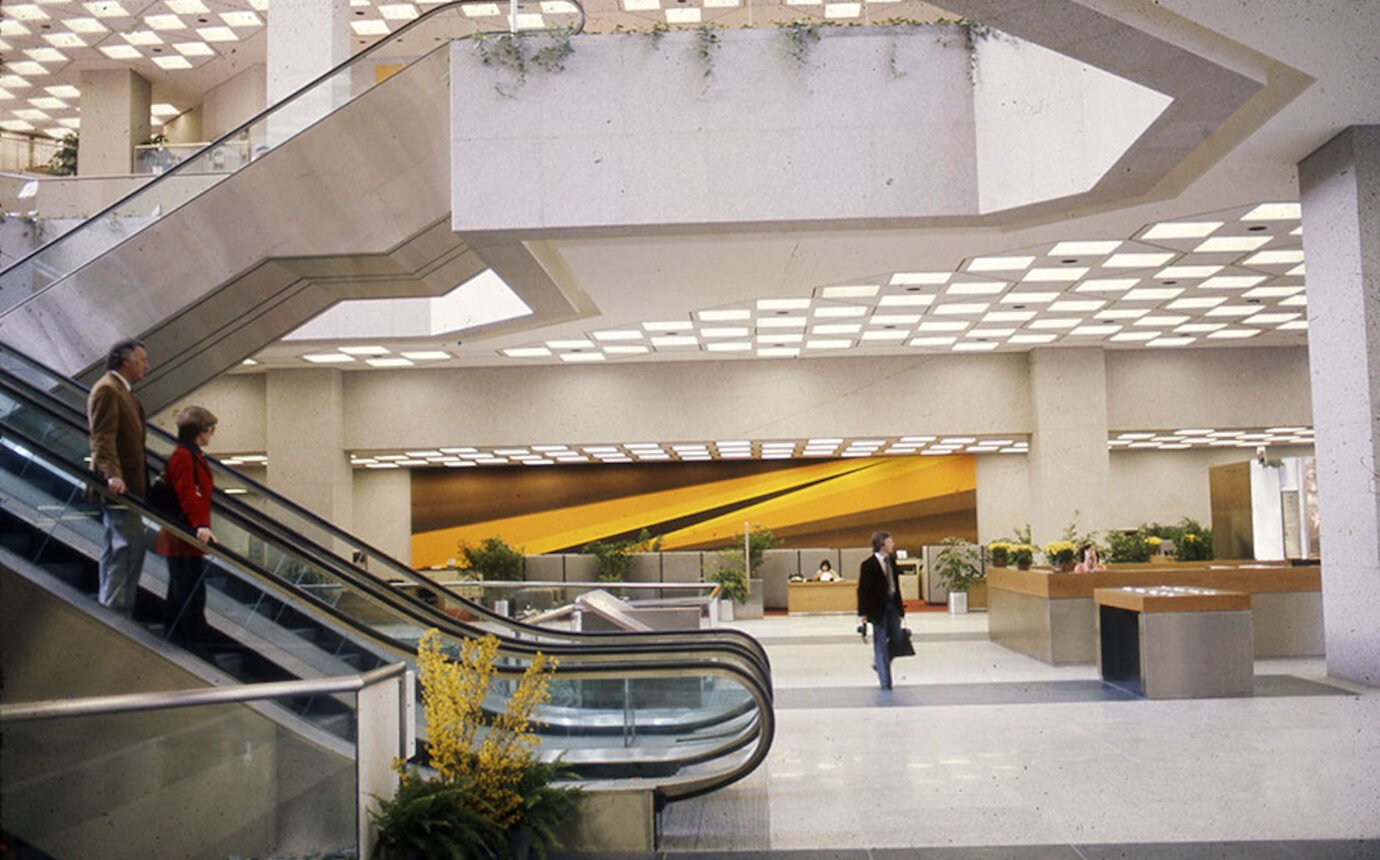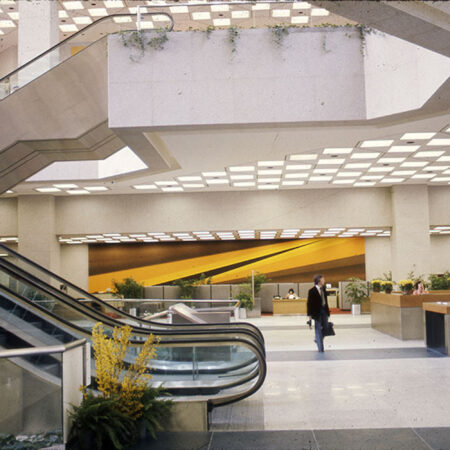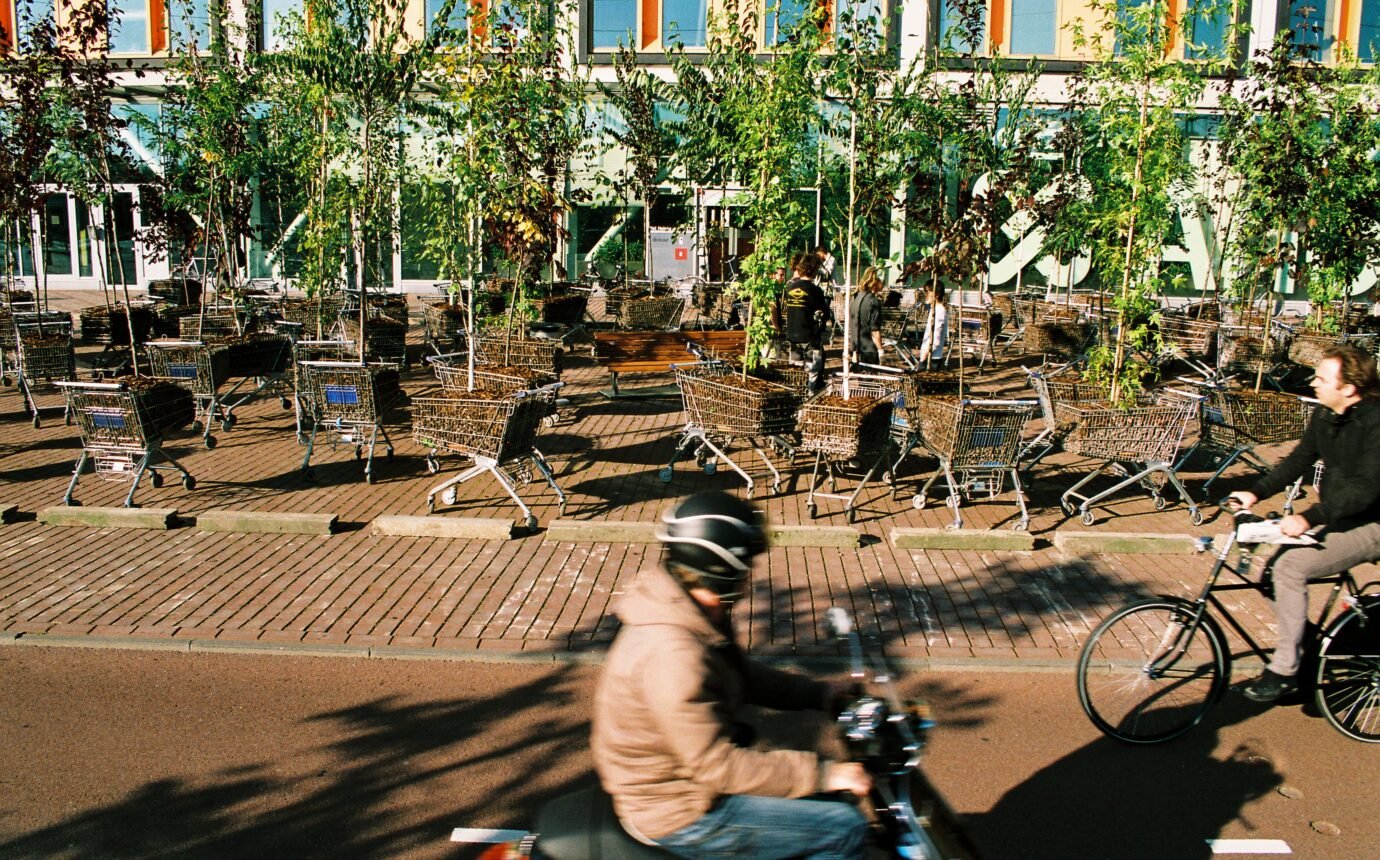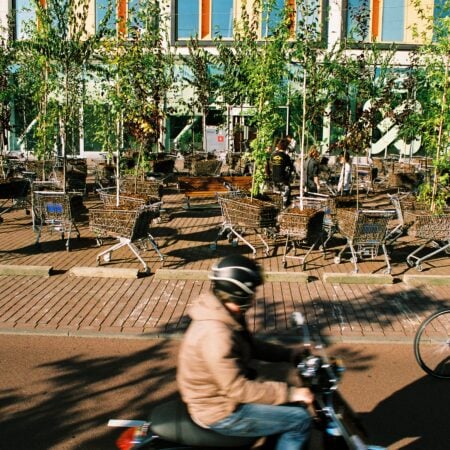How Toronto Lost Its Most Striking Public Art


Rita Letendre’s astonishing murals once covered the city—their disappearance is among our greatest art crimes
For eight years, Rita Letendre’s 1971 mural Sunrise—nearly 3,500 square feet of vibrant colour atop a 22-storey housing cooperative near Church and Gerrard—was a beloved Toronto landmark. Painted in slick epoxy, the work depicted a tapered blue wedge that moved from the bottom right to the top left of the vertical plane. The arrow was flanked by narrower vectors in gold, green and orange, all pointed heavenward. Arriving the same year as Ontario Place and four years after Expo 67, the mural captured a mood of civic optimism in Canada, a sense of possibility and dynamism. People called it the “highway reaching for the sky.”
When, in 1978, Omnitown Developments—a firm whose leadership, to put things as mildly as possible, didn’t give a fuck about art—announced plans to hide the mural behind an adjacent building, ordinary people were furious. Some, led by the journalist Dick Beddoes, petitioned the local ratepayers’ association and the municipal director of cultural affairs to cancel the build. But the developers won. And then they blocked out Sunrise. Today, we can’t even get close enough to see how much of it is still there.
Over Letendre’s seven-decade career (she died in 2021, at 93), versions of this story played out repeatedly. I could tell you about Urtu (1972), a wintry assemblage of intersecting vectors on a Victorian house in Yorkville. Or Sunrise II (1973), a companion piece to the Church-and- Gerrard masterwork in the lobby of a Bloor East apartment complex. Or Irowakan (1974), a play of ambers and dusky blues occupying 50 square metres of atrium wall space at Royal Bank Plaza. These commissions, along with seven or eight others, are all gone. They’ve been painted over, demolished and moved into storage.
The artist’s legacy has fared better. In the past decade, Letendre, who came from Quebecois and Abenaki ancestry, has gotten a flurry of critical attention, propelled by a resurgent interest in Indigenous painters. In 2017, the Art Gallery of Ontario mounted a survey of her work. Currently, it has four Letendre canvasses in its “Moments in Modernism” show and another four in its “Letendre/Morrisseau” room, which pairs her with the beloved Anishinaabe artist Norval Morrisseau. She deserves the exulted position she now occupies in the Canadian art canon. Restoring her to her rightful place in the cityscape will be a heavier lift. Probably, we’ll have to settle for the former in lieu of the latter, which feels like a consolation prize.
I’ve always thought of Letendre as a painter of land and sky, so long as one defines that label as expansively as possible. As a three-year-old in Depression-era Drummondville, QC, Letendre wounded her hand on a set of gears in her father’s mechanics shop and was sent to her grandparents’ nearby farm to recover. In her earliest, happiest memories, she’s running over fields and snow and granite outcroppings. Landscapes would enchant her for the rest of her life—the sun-warmed terracotta of southern Italy, the haunted deserts of Israel and the American southwest. She spent time in all of these regions before settling in Toronto in 1970.
In an essay accompanying the 2017 AGO survey, curator Wanda Nanibush observes Letendre’s obsession with fiery tones, a manifestation, Nanibush argues, of the artist’s anger at having come of age in a colonialist society. The discrimination Letendre faced was brutal—as a five-year-old in central Quebec, she was assaulted by local boys—but rage was rarely the animating force behind her paintings, whose titles suggest serenity and transcendence. Letendre’s fires are more warm than wrathful. They evoke the light of the universe or human creativity, which perhaps spring from the same elemental source.
When I say that she represented land and sky, I don’t mean that her forms—clumps of impasto, hazy colour fields, hard-edged vectors—depict anything quite so literally. An abstract work is, by definition, an assertion of autonomy. In refusing to honour the external world by painting it faithfully, the abstract artist prioritizes her idiosyncratic vision. And yet Letendre’s art conjures the sense of majesty that land and sky evoke. With her public commissions, she brought that enchanted sensibility into the city. These paintings were meant to be seen at scale, preferably on the sides of buildings.
Should you see them, instead, in smaller form at the AGO? Of course, you should. Perhaps, Letendre’s gallery canvasses don’t possess the full power of her public works, but they’re powerful nevertheless. And also, they exist.
Yes, the works in the “Morrisseau / Letendre” room are on the smaller side, and they share wall space with Morrisseau’s six-panel narrative of metamorphosis, Man Changing into Thunderbird (1977), which inevitably steals the show. But the paintings in “Moments in Modernism” are subline. In an exhibition dedicated to art world giants—Ellsworth Kelly, Gerhard Richter—Letendre gets a room to herself, a clear argument that she belongs among the greats. Take time with her paintings. Feel the heat emanating from the primordial lavascape of Victoire (1961) and the cleansing coolness of Daybreak (1983), an assemblage of morning colours, arranged in linear streams.
Where to next? Out of the gallery, I’d say, and up to Glencairn subway station, where, in the late ’70s, workers installed Joy, Letendre’s 200-metre-long, 318-panel vaulted skylight, with bands of ochre, electric blue, and mossy green. Time and circumstance were as hard on this project as they were on the rest of her public works. The glass cracked and leaked. Daylight washed out the colours. After two decades, Letendre had the piece taken down, reasoning it was better off gone than degraded.
By the early 2010s, though, the blank skylight that replaced Joy needed its own replacement. The city reasoned that, if it was going to spend money anyway, it should commission Letendre on the re-design. The new skylight, also called Joy—a blue vector, flanked by strips of yellow and autumnal orange—opened in 2020, a year before Letendre’s death. See it for yourself, preferably when it’s bright outside. Stand on the platform, looking up, and observe how the cosmic fire of the sun mixes with the Promethean fire of Letendre’s human genius. Despite everything we’ve lost, this parting gift remains.



































